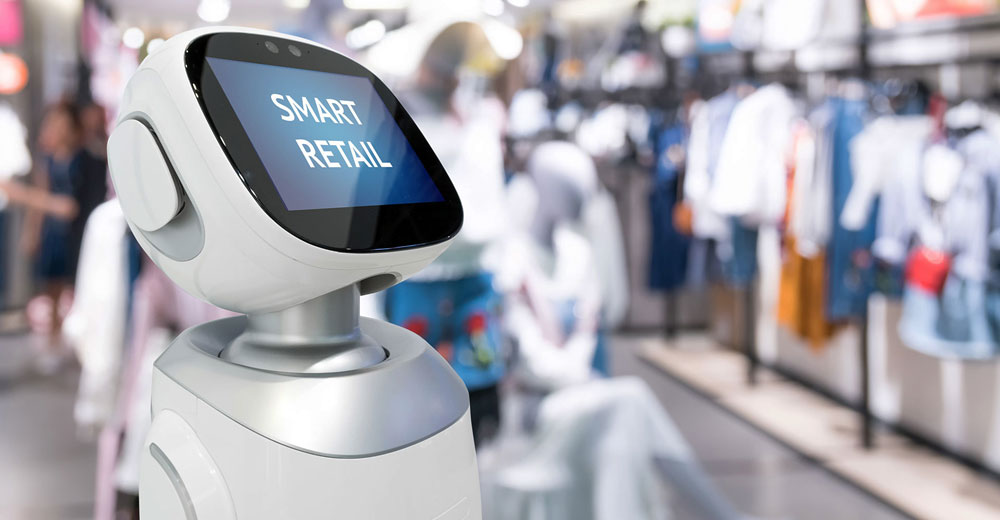The rise in consumer adoption of e-commerce in the wake of the pandemic is pushing the rebirth of brick-and-mortar stores as potential bastions of interactionless in-store shopping that resembles an e-commerce experience. But these redesigns are not for all shoppers. Some prefer no brick-and-mortar shopping at all.
That consumer reaction is pushing retailers to redesign physical stores. Harris Poll research recently found that 70 percent of people want zero interaction with store personnel while shopping. Plus, 35 percent are totally fine never shopping in person again.
An online survey of more than 2,000 U.S. adults ages 18+ conducted by 3D vision system company Sense Photonics further drives home this sharp directional turn by consumers. The survey disclosed that shoppers willing to return to physical storefronts want a completely human-free, contactless, shopping experience.
Those two surveys and other marketing research loudly suggests that big-box retailers need to follow through with what consumers want in order to return to in-person shopping. More automation is on their demand list. Implementing systems that let stores meet consumer standards for convenience and safety from COVID-19 infections arguably help them stand out in a hyper-competitive brick-and-mortar marketplace.
These findings recommend big-box retailers restructure their traditional physical stores into warehouses and fulfillment centers. Those that do not take the lead and heed consumer wishes may not succeed in the new retail normal. Those retailers that do buy into the redesign will position their stores to accommodate radically altered consumer preferences without alienating those who prefer conventional shopping methods.
“Consumer shopping preferences are shifting, and retailers are starting to adapt to a frictionless experience,” said Sense Photonics CEO Shauna McIntyre.
“The retailers that embrace automation and introduce high-performance 3D vision systems and other sensors into their industrial and commercial workflows are more likely to stay ahead of consumer preferences, according to McIntyre.
“This new era of technology is essential to scaling time-sensitive processes like order fulfillment,” she said.
In the ‘Before’ Times
A physical store redesign movement was already underway with some big box namesakes in 2019. Customers relying more on Internet shopping did not go unnoticed by marketers. But most retailers viewed format redesign as risky, time-consuming, and too costly. They looked for a better way.
That better way needed to position brick-and-mortar stores is something more than just a transactional venue. It needed to build brands with in-person experiences not possible in digital channels. Physical stores should offer built-in sensory advantages over e-commerce or customers would not step inside. Then, COVID-19 happened.
With the reopening of brick-and-mortar shops not already permanently shuttered by the pandemic, marketers still face interior redesigns. But the focus is less on a sensory experience that draws customers away from digital storefronts.
Instead, the need is for duplicating the digital experience with contactless pay stations and human-free interaction. The overall new redesign must address customers’ fears of COVID-19 and their desire to maintain social distancing.
“Users have shifted away from visits to B&M stores to online, and many retailers look for a quick hit with store redesigns. The goal is to achieve zero-touch alternatives,” Bilal Soylu, founder of XcooBee, told the E-Commerce Times.
This is a good first step. But shopping models developed in the industrial revolution should be rethought. The old floor plans may not be able to bring back shoppers, he added.
Not New, Only Repurposed
Catalog shopping has made a comeback forced by the need for social distancing in physical stores. Its 360-degree return comes with a few twists and turns, according to retail expert Adele Harrington, chief development officer of United National Consumer Suppliers (UNCS).
Older consumers probably remember tales of parents thumbing through the huge Macy’s holiday gift catalog and picking up their purchases at the service counter. Retailers are bringing back the catalog shopping mentality but delivering it online and even “online in-store,” observed Harrington.
“Most stores are emulating an e-commerce experience by allowing their consumers to browse online and pick up in-store or curbside. They are also making returns and refunds easier than ever so that consumers can get the safety net feeling that e-commerce gives them if they have a change of heart,” she told the E-Commerce Times.
Some non-traditional retailers are even taking it a step further and offering products “online in-store,” she added.
For example, Off Lease Only, an omnichannel car dealership in Florida, sells its inventory online and at their retail location. However, when shopping for a car at the retail level, you do not walk into a showroom or wander around a car lot.
Instead, you walk in, sit down at a computer catalog, select the vehicles you would like to see, and then a salesperson brings you the merchandise. This is an extreme example of online shopping in-store, Harrington explained.
“Still, it has been very successful based not only on COVID-19 shopping limitations but also based on shifting consumer shopping habits and expectations,” she said.
In 2018-2019, every retailer was thinking about and using e-commerce/mobile for sales and marketing. So it is not “new,” noted Harrington.
“But COVID-19 was the tidal wave that pushed everyone to the digital shore in a hurry,” She said.
Redesigning for Automating In-Store Shopping
The COVID crisis has accelerated the interest and adoption of contactless payment technologies. Biometric fingerprint technology allows users to make touchless payments via a personal fingerprint stored on a credit card that is safe, secure, and unique to each individual customer, according to Vince Graziani, CEO of IDEX Biometrics.
“The global demand for biometric technology in the payments industry is robust and will accelerate during the busy end-of-year shopping season and as business returns to a new normal in 2021 and beyond,” he told the E-Commerce Times.
Retailers need to make shoppers feel safe and secure in a brick-and-mortar setting. Plus, the checkout experience needs to be automated with technology that removes direct physical contact of signing and punching in PIN numbers, Graziani added.
Amazon’s experiments with automating in-person shopping at a small number of grocery stores in Seattle could help retailers elsewhere create touchless in-store experiences consumers are demanding, offered Jack Choros, CMO of Little Dragon Media.
You can take things off the shelves, and you do not need to check out. Motion, weight, and infrared sensors track when you take something off the shelf, according to Choros. Those tools can track data and figure out exactly what you took, how much of it you took, and what it costs. Your credit card is billed without the shoppers needing to see a grocery cashier or bagger.
“The fact is, the average retailer cannot do this yet, especially when it comes to groceries. Can this happen with other things? Absolutely, but what I would say is that you would have to convince your customers to be okay with providing you with credit card information and having them be automatically billed,” he told the E-Commerce Times.
Otherwise, how would you serve them? Theoretically, you can include self-checkout terminals in your stores, but Choros has yet to see those outside of the grocery store business.
Making Zero Interaction Work
Retailers have no option but to redesign stores to keep up with the safety needs. Simple things such as sanitizing stations and making masks mandatory is the first step, advised Mohammed Ali, founder and CEO of Primaseller.
“There will be some level of trial and error, but after the initial phase, there should be some semblance of a contactless or interactionless retail model that works,” he told the E-Commerce Times.
Stores will need to have more open floor spaces to maintain social distancing protocols. They will have to be reconfigured for space and speed, he said. He also sees other avenues of bringing safer in-store shopping to stores.
The next step would be to think about contactless payment solutions via mobile and digital wallets, tap and pay. Cash as a payment option will have to be dissuaded, he added.
Self-checkouts, QR-based shopping, and curbside pickups will be crucial in providing an interactionless and, considering the times, safe shopping experiences.
“The other aspect of is the viability of doing this, which can only be guessed. As long as the implementation strategy is broken down into multiple parts, then each part can be independently tweaked for customer satisfaction, as well as growth,” he concluded.
New Normal Retail Checklist
George Pitchkhadze, CMO at Thrive Cuisine, has a quick checklist of things store operators can do to make their floorspace more in line with what hesitant shoppers want for their in-store shopping experience.
- Use printed materials and tablets to educate people about products.
- Offer QR codes that shoppers can scan to see online information about products, such as available sizes, available colors, etc.
- Teach staff to avoid talking to people unless asked to do so.
- Add super-market style self-checkout counters instead of side-by-side with cashier-operated counters.
- Give people the features they are used to using in e-commerce. For instance, a companion app, prompts like “people who view this item also look at…,” QR codes that pull up item reviews, etc.
Automated retail or A-retail has been a steadily growing trend in the U.S and has been the norm in many places around the world for some time, noted Haris Bacic, co-founder of PriceListo.
Anyone who has ever used a self-checkout option or a smartphone app to pay while actually in the physical store has already had a taste of the A-retail trend at work.
“It is perfectly reasonable to see retail choosing to double down on the technology in the form of more self-check options that will help reduce checkout lines,” he told the E-Commerce Times. Consumers listed waiting on lines as the most painful and stressful part of the in-store buying experience, he added.
Other amenities for redesigning in-store floor space include low- or no-contact kiosks that offer circulars and coupons. Having robot greeters and sales assistants to help maintain social distance safety measures would also be well received.
























































Social Media
See all Social Media